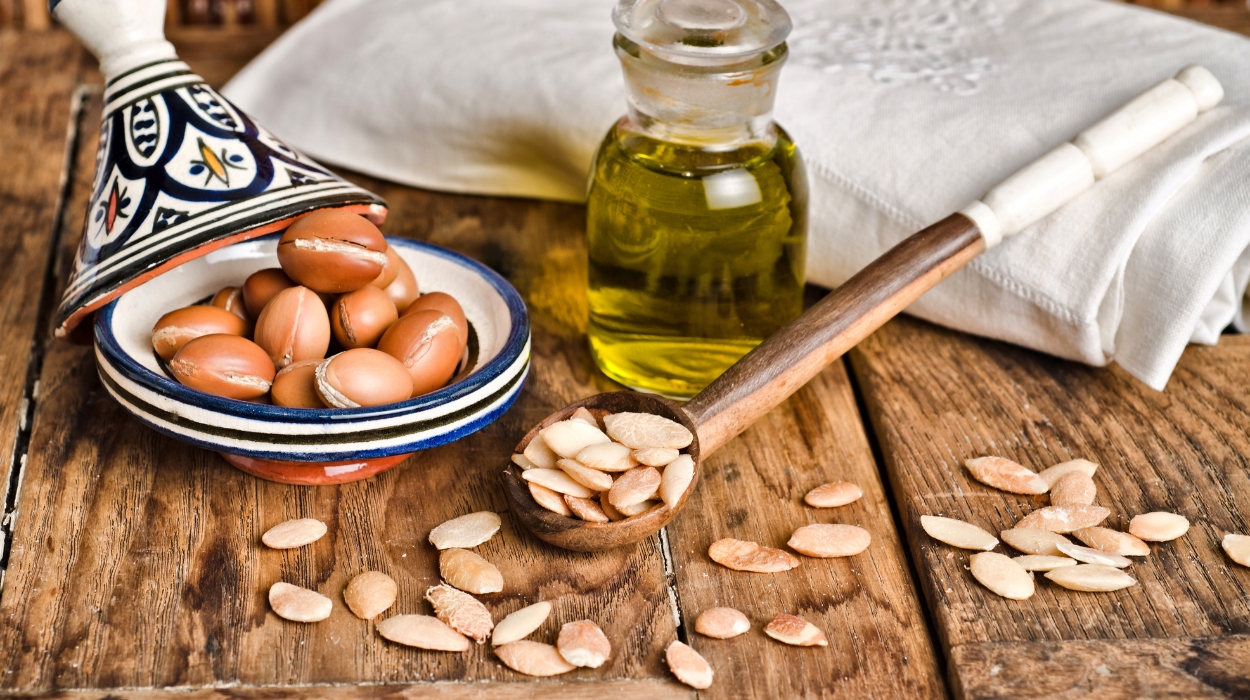 Expert's opinion
Expert's opinion
Expert's opinion
The article is a subjective view on this topic written by writers specializing in medical writing.
It may reflect on a personal journey surrounding struggles with an illness or medical condition, involve product comparisons, diet considerations, or other health-related opinions.
Although the view is entirely that of the writer, it is based on academic experiences and scientific research they have conducted; it is fact-checked by a team of degreed medical experts, and validated by sources attached to the article.
The numbers in parenthesis (1,2,3) will take you to clickable links to related scientific papers.
How To Treat Low Porosity Hair: Best Hair Tips 2024

Moisture balance is vital to healthy and strong hair. Hair porosity refers to how well your hair shafts absorb and retain moisture, oils, and hair products. Low porosity is not absorbent, meaning products accumulate on the surface of your hair rather than penetrating the hair shafts.
While you can’t increase your hair’s porosity without causing damage, you can learn to cater to your hair type when caring for your hair. For example, a hot oil treatment can lift the cuticles and absorb moisture into the hair shaft. Read on to learn more tips on how to treat low-porosity hair.
How To Fix Low Porosity Hair
Research shows that a hair care regimen focused on increasing hydration and removing product build-up is effective for low hair porosity. Use the following tips to maintain healthy hair:
- Find a good clarifying shampoo.
- Use lightweight oils.
- Deep condition with heat.
- Use water-based, lightweight products.
- Treat and prevent build-up.
How To Treat Low-Porosity Hair
The best way to care for low-porosity hair is to increase the moisture penetrating the shaft. You must also avoid using products that leave a residue. As products accumulate, you’ll want to treat build-up. Here are some tips for maintaining a healthy balance for your hair and advice on what to use for low-porosity hair:
Find A Good Clarifying Shampoo
Shampoos are not only essential in cleaning the scalp. According to an article published in the National Library of Medicine, they also prevent hair shaft damage. Finding the right shampoo for low-porosity hair is crucial in successfully treating product build-up.
A good clarifying shampoo is designed to remove styling product buildup from the hair shaft. Products that use sulfates[1] as their primary detergents to break down product accumulation, such as hair spray, gel, and mousse may be too drying for low-porosity hair. Investing in a quality shampoo can help prevent the harsh, dull appearance some experience with less porous hair. Coco-glucoside may be an alternative safe ingredient.
Use Lightweight Oils

Lightweight oils, such as Argan oil, regulate sebum secretion and have an excellent water-holding capacity. In India and other parts of the world, hair oiling treats the roots to the tips. Since those with low hair porosity can experience dry ends, applying a lightweight oil can certainly be helpful to avoid build-up.
Apply Deep Conditioner With Heat
Another way to fix low-porosity hair is to deep-condition hair with heat. According to a National Library of Medicine journal, deep conditioner molecules contain a cationic surfactant.[2] The cationic surfactant gives a positive electric charge to the conditioner, which is attracted by the negative charge of your hair. This successfully deposits the conditioner on the hair, mainly where there is weathering.
Since less porous hair has difficulty absorbing moisture, it’s crucial to moisturize low-porosity hair with deep conditioning treatments. Also known as intensive hair conditioners, they are more concentrated. When you leave them on the hair for 20 to 30 minutes and add heat to help increase absorption, you’ll notice a positive change in your hair.
Use Water-Based, Lightweight Products
Since the primary concern with low porosity hair is hydration, water-based products help. These products are more likely to penetrate the hair shaft, moisturizing the cuticle and preventing more significant build-up.
Products that contain glycerol also have a positive effect. Glycerol is a trihydroxy alcohol[3] that plays a significant role in skin hydration, cutaneous elasticity, and epidermal barrier repair. Using water-based products with glycerin helps hydrate the scalp.[4] Maintaining a healthy scalp can also increase hair hydration, as promoting the production of natural oils can also help hydrate the hair.
Treat And Prevent Build-Up
Since low-porosity hair is prone to build-up, you’ll want to treat and remove product accumulation regularly. A cleansing yet hydrating shampoo can effectively wash low-porosity hair without stripping it of essential oils to maintain a healthy moisture balance. You can also try an apple cider vinegar rinse to break down product accumulation.
Since finding the right balance can be challenging, talk to your hair stylist or dermatologist for the best recommendation. They can help you create a hair care regimen that treats and prevents build-up while hydrating less porous hair.
What Is Low-Porosity Hair?
You’ll need to know about the structure of your hair to understand hair porosity. Each hair strand has three layers:[5]
- The outermost layer of your hair is called the cuticle. It protects your hair by overlapping dead cells in a scale-like pattern.
- The middle layer of your hair, or cortex, contains most of your hair’s fiber mass.
- The medulla is the innermost hair layer.
Hair porosity differs from hair type, which refers to how well your hair absorbs moisture. Your hair’s cuticle determines porosity. When the dead cells on the hair cuticle are smooth and have few gaps, they prevent water from penetrating the deeper layers of the hair. When the hair is less porous, it also means that less water can escape.
Some individuals have high hair porosity, while others have medium porosity or low porosity hair. While having low porosity doesn’t make your hair condition worse than someone with medium or high porosity, you’ll need to consider various tips when creating the proper hair regimen for your hair needs. Understanding how porous your hair is allows you to know why your hair reacts the way it does to specific products and how to take care of it.
What Causes Low-Porosity Hair?

The cuticle layer in low-porosity hair lays flat, making it more resistant to moisture absorption. When moisture or other substances penetrate the hair shaft, your hair will retain moisture longer. Low porosity hair means you may experience:
- Hair product accumulation.
- Stiff response to protein treatments.
- Longer drying time.
- Hair takes longer to get wet.
- Dry ends.
Individuals with straight hair tend to have low porosity hair compared to those with curly or wavy hair.
High hair porosity has hair cuticles with gaps between the dead cells. Therefore, the hair cuticle layer does not lie flat, and moisture can penetrate and escape more easily. If your hair is naturally curly or wavy, it may be more porous because the coils in more textured hair cause the cuticle to lift.
High porosity hair can also result from chemical or mechanical damage. Overbrushing or repeatedly washing and drying hair can cause friction that increases porosity. Chemical and color treatments, such as perms, dyes, bleach, and relaxers, can make your hair more porous.
Signs you have high porosity hair include:
- Hair becomes saturated quickly.
- It dries quickly.
- Significant hair breakage.
- Hair absorbs products easily.
- Frizzy or dry hair.
What To Avoid In Your Low Porosity Hair Regimen
The best products and techniques can help you care for your hair and avoid damage. As with any hair type or porosity, you’ll want to know how your hair handles certain products and treatments. Since low-porosity hair is known to get brittle, breakage can also be problematic.
Studies show that using a biotin supplement can reverse the effects of poor hair growth[6] in those with a biotin deficiency.
If you have fine, low-porosity hair, you’ll also want to avoid products and treatments that exaggerate build-up and prevent moisture absorption. Avoid the following:
- Heavy oils and creams can accumulate quickly and build up on the hair shaft.
- Applying excessive use of thick hair products.
- Not washing your hair enough.
- Overdoing it with protein products.
- Applying too much heat from hair styling tools such as blow dryers, flat irons, and curling irons.
- Over-chemically processing your hair with dyes, perms, and other chemicals.
The Takeaway
Those with low porosity hair experience difficulty with moisture and oil penetration. As products build up on the surface of your hair and moisture fails to penetrate the hair shaft, it is more challenging to process and style your hair.
Finding the right low-porosity hair products can make it easier to care for your hair. You’ll love how easy it is to maintain healthy hair and manage your locks when you find the proper hair care regimen.
+ 6 sources
Health Canal avoids using tertiary references. We have strict sourcing guidelines and rely on peer-reviewed studies, academic researches from medical associations and institutions. To ensure the accuracy of articles in Health Canal, you can read more about the editorial process here
- Zoe Diana Draelos (2010). Essentials of hair care often neglected: Hair cleansing. International Journal of Trichology, [online] 2(1), pp.24–24. doi:https://doi.org/10.4103/0974-7753.66909.
- Paschal D’Souza and Rathi, S. (2015). Shampoo and conditioners: What a dermatologist should know? Indian Journal of Dermatology, [online] 60(3), pp.248–248. doi:https://doi.org/10.4103/0019-5154.156355.
- Björklund, S., Engblom, J., Krister Thuresson and Sparr, E. (2013). Glycerol and urea can be used to increase skin permeability in reduced hydration conditions. European Journal of Pharmaceutical Sciences, [online] 50(5), pp.638–645. doi:https://doi.org/10.1016/j.ejps.2013.04.022.
- Milani, M. and Sparavigna, A. (2017). The 24-hour skin hydration and barrier function effects of a hyaluronic 1%, glycerin 5%, and Centella asiatica stem cells extract moisturizing fluid: an intra-subject, randomized, assessor-blinded study. Clinical, Cosmetic and Investigational Dermatology, [online] Volume 10, pp.311–315. doi:https://doi.org/10.2147/ccid.s144180.
- Fernanda, M. (2015). Hair cosmetics: An overview. International Journal of Trichology, [online] 7(1), pp.2–2. doi:https://doi.org/10.4103/0974-7753.153450.
- Patel, D., Swink, S.M. and Castelo‐Soccio, L. (2017). A Review of the Use of Biotin for Hair Loss. Skin appendage disorders, [online] 3(3), pp.166–169. doi:https://doi.org/10.1159/000462981.



